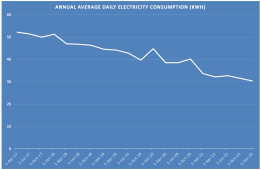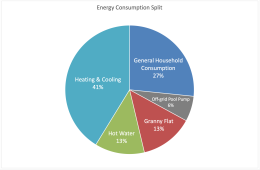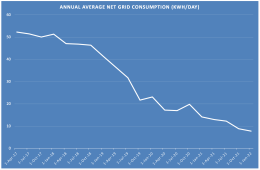wattmatters
Solar Wizard
I have multiple motivations for the solar PV and battery systems I have.I'll be honest, for us, it doesn't have to be an absolute net positive calculation to make the move, it just has look good enough.
The grid tied system is solar PV only. Its primary purpose is to save us money, which it is and on schedule for ~4 year payback.
But I also wanted it to reduce our carbon emissions, which it is also doing. Embedded emissions of the system have long since been paid back and it's made a good impact on that front, primarily because our grid power is coal dominated.
On that front I have also been spending money on home efficiency improvements which have been a bit less financially rational. Earlier this week I had an insulation upgrade to one part of the house, hopefully this will reduce the energy consumption a bit. We also invested in energy efficient laundry appliances and an induction cooktop. Hard to recover the expense of these items but they are not "irrational" decisions, only if the opportunity cost means the resources were better deployed in other ways. The one item that was a wise upgrade was the pool pump (pool was already there). The replacement unit consumes ~ 1/4 of the energy of the old pump. The reduced consumption paid for the additional cost of the pump within 18 months.
Soon I will be installing a smart power diverter for the hot water heating element and removing it from our overnight off-peak circuit. This system will monitor excess power being exported to the grid and vary power delivered to the hot water element accordingly. This maximises our self consumption and somewhat reduces overall carbon emissions (our night time grid power is mostly coal power, while daytime exports are offsetting grid coal + grid renewable energy). This latter decision is not financially justifiable on its own but continues my commitment to carbon reduction related to our energy consumption.
The off-grid solar PV and battery system is for grid outage backup supply, but it doubles up as an off-grid source of energy and now runs our pool pump, so that is completely off-grid. It was also built from many repurposed items (solar PV, batteries, mounting hardware) to significantly reduce the embedded carbon costs of doing so.
It's doable if you have a strategy and keep plugging away at it. e.g. this is the daily average electrical energy consumption for our home since we moved here in 2016 (all electric home, i.e. no gas):If we can make a real dent in the average usage, then we can move forward with a right sized system.

That's a consumption reduction of 22kWh/day. We still have more to do on this front. Heating and especially cooling are our big ticket items as shown by our energy consumption split:

Our daily average net grid energy is even better:

We are not yet net zero, but closing in.


